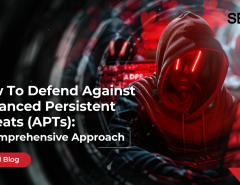The digital world has opened up a plethora of opportunities for workplaces across the globe. Digital transformation means, among other things, seamless connectivity, the erasure of physical barriers and enterprises that can leverage the freedom of knowledge sharing without boundaries to enable greater productivity, profits and progress.
But a digital workplace also brings with it various risks. Cybersecurity has become extremely important as hackers and other malicious individuals try to find ways and means to disrupt and upset enterprise businesses. Security teams, then, have to constantly be on their toes to anticipate new threats and ensure the enterprise is protected. Some of the key trends they should begin embracing to manage digital risk are:
- Adopting a layered approach
In an age of multi-varied attacks which have many different vectors, it is instrumental for organizations to take a layered approach towards cybersecurity. Only one approach or solution will not be sufficient against the sheer variety of attacks that proliferate in the wild.
In such a situation, organizations must ensure that they put in place different layers of cybersecurity around their organization to ensure that they are well-defended. These layers could be in different forms, i.e.: firewall, endpoint security, encryption, Data Loss Prevention (DLP), etc, but the most important thing is they remain providing a mix of different approaches.
- Maintaining a zero-trust network
On the above point, another objective that organizations could approach is by adopting a “zero-trust” approach towards network security. Introduced by American market research giant, Forrester Research, the zero trust network model eliminates the concept of a perimeter and calls for enterprises to inspect all network traffic without any classifications of “inside” and “outside”. Basically, no user or traffic is considered “authorized” and all access to a specific network is governed by the same set of rules. Basically, there is “zero trust” in this model – all traffic to the network is untrusted and must be validated before allowed entry.
- Don’t try a one-size-fits-all approach
The digital world is a dynamic and fast-changing world where the environment, threat detection and risk management change drastically. In such an environment, security teams should not try to create one specific approach and be inflexible about imposing it across the enterprise. There should be a horses for courses approach with the approach readily flexible to adjust to changing realities.
- Create & Comply with Policies
It is important that security teams create a strong information security policy with specific focus on digital risks. This policy must be thorough, easily understandable and cascaded down to all levels. Employees must be asked to read these policies with compliance tracked. This goes a long way in managing digital risks.
- Follow two-factor authentication
More and more companies are embracing two-factor authentication to maintain a secure environment in the digital world. Two-factor authentication adds an additional layer of security to the authentication process. This step goes a long way in keeping confidential data secure and tracking those who have access to these details.
Seqrite, a leader in cybersecurity, can provide a secure platform for businesses to keep their data safe online. A multi-layered solution offers a range of powerful tools to allow enterprises to unallow malware, untolerate vulnerabilities and unauthorize alien access, leading to an unrisk enterprise.
As an IT security partner for your business, Seqrite provides comprehensive security from advanced cyber threats. To know more




